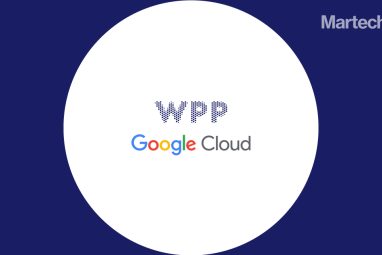Microsoft and Oracle Combine Forces to Offer Multi-cloud Services
Microsoft and Oracle to interconnect Microsoft Azure and Oracle Cloud. Experts say it’s a jab at cloud computing leader Amazon Web Services. Microsoft and Oracle recently announced a cloud interoperability partnership, enabling customers to migrate and run mission-critical enterprise workloads across Microsoft Azure and Oracle Cloud. According to the press release shared by Microsoft, enterprises […]
Microsoft and Oracle to interconnect Microsoft Azure and Oracle Cloud. Experts say it’s a jab at cloud computing leader Amazon Web Services.
Microsoft and Oracle recently announced a cloud interoperability partnership, enabling customers to migrate and run mission-critical enterprise workloads across Microsoft Azure and Oracle Cloud.
According to the press release shared by Microsoft, enterprises can now seamlessly connect Azure services, like analytics and AI, with Oracle Cloud services, like an autonomous database. By enabling customers to run one part of a workload within Azure and another part of the same workload within the Oracle Cloud, the partnership delivers a highly optimised, best-of-both-clouds experience. Taken together, Azure and Oracle Cloud offer customers a one-stop shop for all the cloud services and applications they need to run their entire business.
The two companies said the high-speed link between their data centres would start with facilities in the eastern United States and spread to other regions. They will also work together to let joint users log into services from either company with a single user name and get tech support from either company.
What Does the Microsoft-Oracle Partnership Offer?
“With Oracle’s enterprise expertise, this alliance is a natural choice for us as we help our joint customers accelerate the migration of enterprise applications and databases to the public cloud,” Microsoft’s cloud Chief Scott Guthrie said in a statement.
Also Read: On Cloud Nine: The Middle East’s Growing Affinity for Cloud-based Marketing Infrastructures
As a result of this expanded partnership, the companies are today making available a new set of capabilities:
- Connect Azure and Oracle Cloud seamlessly, allowing customers to extend their on-premises datacenters to both clouds.
- Unified identity and access management, via a unified single sign-on experience and automated user provisioning, to manage resources across Azure and Oracle Cloud.
- Supported deployment of custom applications and packaged Oracle applications (JD Edwards EnterpriseOne, E-Business Suite, PeopleSoft, Oracle Retail, Hyperion) on Azure with Oracle databases (RAC, Exadata, Autonomous Database) deployed in Oracle Cloud. The same Oracle applications will also be certified to run on Azure with Oracle databases in Oracle Cloud.
Adding to that, Don Johnson, Executive Vice President of Oracle’s cloud infrastructure unit, said, “With this alliance, our joint customers can migrate their entire set of existing applications to the cloud without having to re-architect anything, preserving the large investments they have already made.”
Is the Alliance Competing with AWS?
Amazon.com’s Amazon Web Services, the largest cloud computing provider, is encroaching on many of the customers Johnson mentioned, including in Oracle’s historical stronghold in the database market.
Microsoft has previously inked a deal with German software maker SAP SE and Adobe Inc to make their services work better together.
Also Read: Akamai Expands Partnership With Microsoft Azure
Reuters quoted Ed Anderson, an analyst with research firm Gartner, saying that the move was an apparent ‘jab’ at AWS, especially for Oracle. “It’s no secret that Oracle views AWS as a major competitor in the database market,” he said.
Anderson added that there remained some unanswered questions about the deal, such as whether customers would face data transfer fees for moving large amounts of information back and forth between services.
But overall, Anderson said the move would likely benefit the companies by helping their pitch to large businesses already using services from both. “It’s a great way for both companies to be able to hitch their cloud offerings together,” he said.
What This Means for the Customers
Customers seem to be happy with the multi-cloud offering. “As we look to bring our omnichannel experience closer together and transform the technology platform that powers the Gap Inc. brands, the collaboration between Oracle and Microsoft will make it easier for us to scale and deliver capabilities across channels,” said Sally Gilligan, Chief Information Officer at Gap, adding, “The interoperability between Azure and Oracle Cloud allows us to deploy Oracle or custom-built applications on Azure and Oracle databases on Oracle Cloud.”
Also Read: Microsoft Acquires Express Logic, Accelerates IoT Development
Vinay Kumar (Shivagange Chandrashekar), Vice President of Product Management at Oracle, said in a blog post on the company website, that when enterprises migrate their workloads to the cloud, they often “become stranded on multiple cloud islands”, with little ability to “share data between the islands”. He added, “The alliance between Microsoft and Oracle represents an industry-first offering that gives customers the ability to use multiple clouds with much greater effectiveness seamlessly. It moves customers towards the promise of nimble apps that can shift from cloud to cloud easily, and even deploying individual apps that span multiple clouds.”
He lists two of the common multi-cloud use cases:
- Applications run in separate clouds with consistent controls and data sharing: In this approach, customers deploy applications entirely in one cloud or the other, but they benefit from common identity management, single sign-on, and the ability to share data among clouds for analytics and other secondary processes.
- Applications span clouds, typically with the database layer in one cloud and the app and web tiers in another: A low-latency connection between the clouds lets customers choose preferred components for each application, allowing a single consistent application with separate parts running in the optimal cloud for each technology stack.
“In general, the first use case is more likely because demanding enterprise applications haven’t been designed to live in different locations. Over time, as applications become more decoupled, we expect to see more adoption of the second use case,” writes Kumar, adding, “Data-oriented enterprise workflows are increasingly connected, with data handoffs, validations, and process extensions being key success criteria. When applications run in a customer data centre, it’s fairly easy for these types of handoffs to happen with low latency. But, as these applications have moved to separate clouds, it’s been hard to make them interact effectively.”
According to Kumar, this multi-cloud agreement will enable just that, giving customers the ability to build a web of loosely coupled yet tightly interconnected applications that span the two vendor’s clouds.






